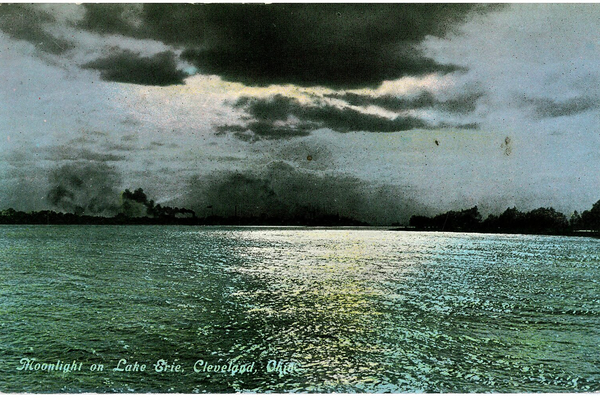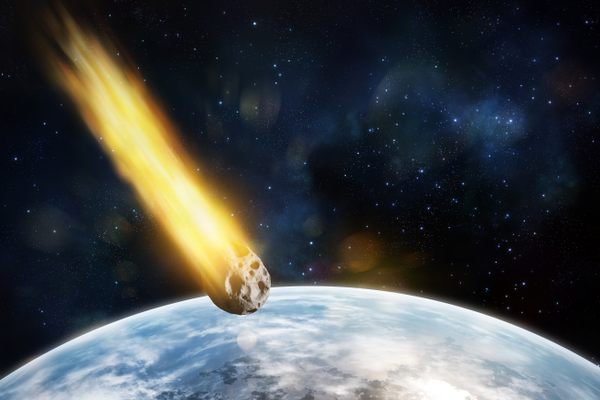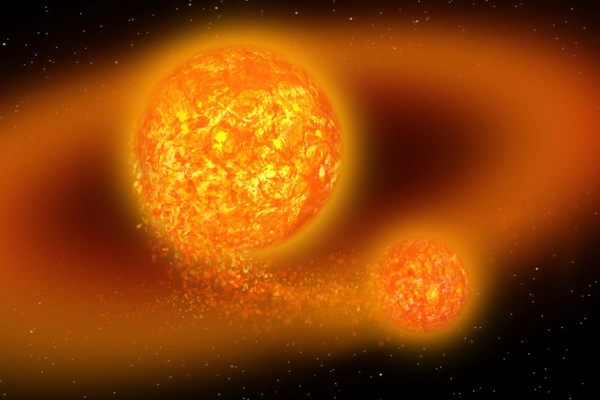Asteroid Collisions, Wandering Spacecraft, and Eggnog
Taking holiday a moment to appreciate how Earth got its water—and eggnog and mulled wine.

On a clear, bright morning in September 2023, a spacecraft landed at a military site in Utah—and humanity’s representatives burst into laughter, tears, and applause. It may not have seemed like it to most of us, but at that very moment, our species got a little closer at that moment to finding out the provenance of eggnog. And mulled wine. And, well, pretty much everything.
Minutes after the spacecraft gently rendezvoused with the planet, helicopters flew out to greet it. They swirled around the inert, rotund capsule, and dropped off a few people nearby. The visitors approached cautiously. The oven-sized vessel, once attached to a larger mothership, had traveled millions of miles around the solar system on a seven-year odyssey. And now it had returned home, full of treasure.
This was the very opposite of a UFO. Everyone had anticipated its safe arrival. The retrieval of the craft was the apotheosis of a billion-dollar effort called OSIRIS-REx—the Origins, Spectral Interpretation, Resource Identification, Security, and Regolith Explorer. Conceived in the early 2000s, launched in 2016, the spacecraft had many objectives. Chief among them was to become the first U.S. space mission to snatch matter from an asteroid and bring it back home. And, despite coming up against several comedically epic hurdles—from dodging debris from exploding rockets to escaping from the asteroid’s quicksand-like surface—it pulled it off.
The capsule, containing pristine and primordial cookie crumbs from an asteroid named Bennu—was speedily transported to NASA’s Johnson Space Center in Houston. A few weeks later, at a grandiose press conference, scientists announced something that, to them, was extremely exciting: The asteroid sample included, among other things, water.

Many of the fundamental features of our world are suffused with mystery. Water is one of them. Scientists have a fantastic understanding of how water is a remarkable medium for life, how it transmogrifies between various states of matter, how it dives through, flows across, and flies over the planet—how it dominates, shapes, and controls the fate of the world. But they don’t actually know where it came from.
Earth wasn’t always an oceanic paradise. Before it was soggy, it was covered by an ocean of magma while being smashed to bits by careening protoplanetary objects at the dawn of the solar system. Earth’s oceans and seas and lakes and rivers and rain didn’t just magically appear. They all had to come from somewhere. Scientists can’t quite be sure where—there’s not enough evidence to confidently say.
It’s worth dwelling on that for a moment. Most of our bodies are made of water. H2O falls on our heads and umbrellas. We imbibe it all the time—in various forms. But its origin is a puzzle, which means when you’re celebrating this winter with your libation of choice, you’re drinking something positively alien.
There are, of course, some popular ideas. Comets are made of various frozen substances, including frozen water. It was assumed for some time that that’s where our water came from. Comets have crashed into the planet a fair few times over the last few billion years, so there is nothing inherently wrong with thinking that’s how we got oceans.

But after sending several robotic envoys to chase down comets over the last couple of decades, that hypothesis became a little less clear. The rubber duck–shaped comet 67P/Churyumov-Gerasimenko, investigated up close by the European Space Agency’s Rosetta spacecraft in the mid-2010s, was found to have water that didn’t match up with sort we slurp on Earth. Its chemical fingerprints were not of the sort found in Earth’s glaciers, rivers, seas, or skies. That meant that some comets may have given Earth some of its water—but other comets weren’t involved at all.
And asteroids? Though some are arid, many of them contain a surprising amount of water—nowhere near as much as comets, but more than you may think. There are millions of them out there, mostly hiding between Mars and Jupiter, spinning through the darkness. Sometimes they have found their way to Earth. In fact, because of their proximity to the planet, they impact the world far more frequently than their more elephantine, icy cousins, the comets, which mostly while away their lives in the outer reaches of the solar system.
It stands to reason, then, that much of Earth’s water could have been delivered by asteroids, many billions of years ago. And, over the last few decades, the evidence for this has been mounting. Just in 2022, it was revealed that a tiny asteroid that (harmlessly) plunged into the bucolic English town of Winchcombe a year earlier contained water—with a chemical fingerprint extremely similar to the stuff in Earth’s seas. If parcels like this had tumbled from the heavens millions of times over many eons, then it is no wonder that the world might grow damp.
As with many Earth, space, and planetary science tales, the actual solution to this conundrum is complex, and probably involves multiple players: comets and asteroids, for sure, but some also suspect a third party. Seeing as water is so prevalent throughout the cosmos, some of Earth’s may have come from caches of free-floating interstellar water simply condensing on the world as it cooled and crystallized 4.6 billion years ago.

This lingering uncertainty is why OSIRIS-REx is so valuable. The water trapped in the samples of the asteroid Bennu may or may not match Earth’s own. Either option is an exciting possibility, as they both would bring scientists a step closer to decoding the recipe behind the planet’s life-sustaining cocktail.
Regardless of the outcome of that analysis, it’s already safe to say one thing: Asteroids provided Earth with some of its water. And that’s a wonderfully weird thing to consider.
These lithic missiles have hit Earth countless times over the planet’s lifetime. On at least one occasion, their dramatic violence engendered a mass extinction; on many, many others, they blasted great big chasms in the ground without even touching it, like non-radioactive midair nuclear explosions. Near-Earth asteroids are commonplace agents of destruction—and present a contemporary threat that is, thankfully, now being taken seriously by NASA.

Asteroids are also arbiters of creation. The water that they violently delivered to the young Earth is still being erupted by volcanoes or poured out by waterfalls today. The very same wandering geologic creatures have both the power to annihilate life and, in part, grant the planet the power to craft and sustain biology. They are rocky embodiments of chaos.
So do me a favor. This winter, when you’re knocking back your celebratory tipple, raise a glass to the memory of an ancient asteroid. These space rocks may have made a heck of a mess, but without them, you probably wouldn’t be here to toast the end of the year.
Robin George Andrews is a doctor of volcanoes, an award-winning freelance science journalist, and the author of two books: Super Volcanoes: What They Reveal About Earth and the Worlds Beyond (2021), and the upcoming How to Kill an Asteroid: The Absurd True Story of the Scientists Defending the Planet (2024).














Follow us on Twitter to get the latest on the world's hidden wonders.
Like us on Facebook to get the latest on the world's hidden wonders.
Follow us on Twitter Like us on Facebook